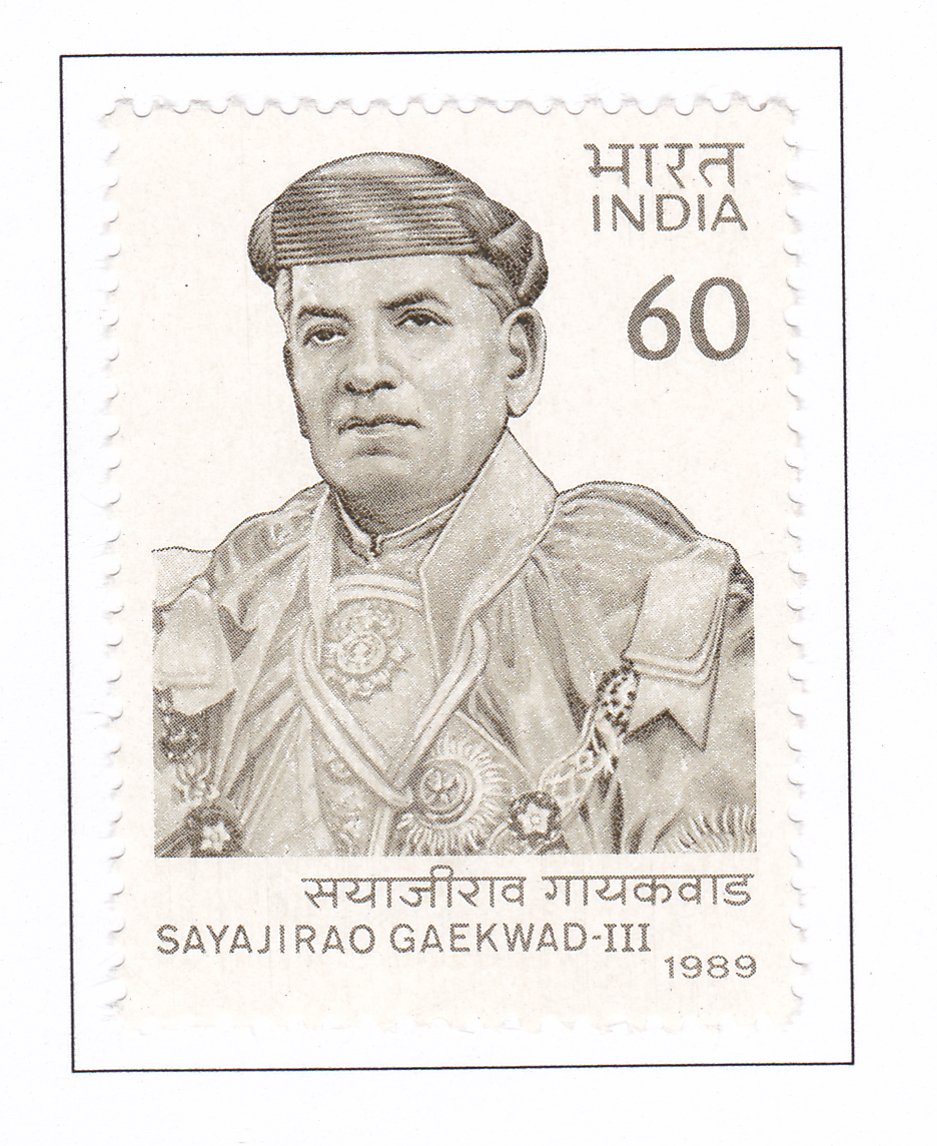Maharaja Sayajirao Gaekwad III (1863-1939)

Technical Data
| Date of Issue | October 6, 1989 |
|---|---|
| Denomination | 60 p |
| Quantity | 1,000,000 |
| Perforation | comb 13 x 13½ |
| Printer | Security Printing Press, Nashik |
| Watermark | No Watermark |
| Colors | Brownish grey |
| Catalog Codes |
Michel IN 1234 Stamp Number IN 1293 Yvert et Tellier IN 1036 Stanley Gibbons IN 1385 |
| Themes | Anniversaries and Jubilees | Famous people | Headgear | Men |
Maharaja Sayajirao Gaekwad III (1863-1939) was a pivotal figure in the history of Baroda State and a significant leader in the Indian princely states during the British Raj. Here’s an outline for a commemorative stamp set in his honor:
Commemorative Stamp Set: Maharaja Sayajirao Gaekwad III (1863-1939)
Design Elements:
- The main stamp could feature a portrait of Maharaja Sayajirao Gaekwad III, showcasing his regal attire and demeanor.
- Additional stamps might depict scenes from his reign, such as educational reforms, social initiatives, infrastructure development like railways, and his patronage of arts and culture.
- Symbolic elements representing his commitment to modernization, education, and Indian nationalism could be incorporated into the background or border designs.
Cultural and Historical Significance:
Maharaja Sayajirao Gaekwad III is remembered for his progressive rule marked by extensive reforms in education, social justice, and governance. He pioneered free and compulsory primary education, banned child marriage, promoted religious and cultural studies, and advocated for the upliftment of marginalized communities. His reign transformed Baroda State into a hub of education and cultural resurgence, setting it apart from other princely states of British India.
Usage:
The commemorative stamps would be used to celebrate Maharaja Sayajirao Gaekwad III’s contributions to education, social reform, and Indian nationalism. They would serve as educational tools, encouraging awareness and appreciation of his visionary leadership among collectors, historians, and the general public.
Importance of the Commemorative Stamp Set:
This stamp set is important for honoring Maharaja Sayaji Rao Gaekwad III’s legacy as a visionary ruler who bridged traditional princely governance with modern ideals of social equality, education, and cultural revival. It underscores his role in shaping Baroda State’s progressive identity and his influence on India’s nationalist movement.
Example of the Stamp Design:
The central stamp design could feature Maharaja Sayajirao Gaekwad III seated on a throne, surrounded by symbols representing education, justice, and Indian culture. Border designs could include motifs from Baroda’s cultural heritage, such as traditional art forms or architectural elements from the state’s landmarks.
Significance:
The issuance of this stamp set signifies India’s recognition of Maharaja Sayajirao Gaekwad III’s enduring impact on education, social reform, and his advocacy for Indian nationalism. It honors his legacy as a reformist ruler who strove for the welfare and progress of his people, leaving a lasting imprint on Baroda’s history and India’s freedom struggle.
